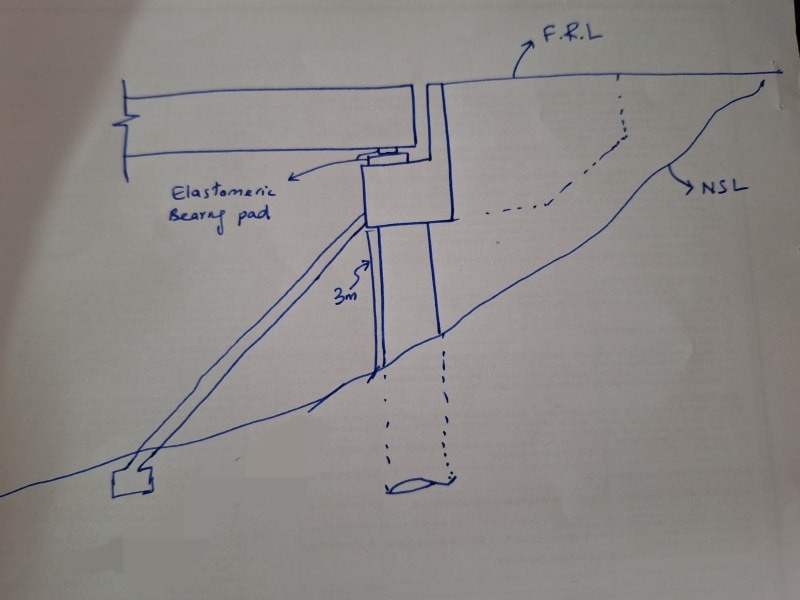Hassaan_16
Structural
Hi! We are designing a single span bridge comprising spill-through abutments at the ends instead of retaining wall abutments. The abutments are initially planned as pile bent piers with height (till depth of fixity from NGL) approximately 15m. The piers will protrude from the fill for 3m till the pier cap.
AASHTO LRFD suggests no seismic design be carried out for single span bridges but I think this one should be analysed and designed for seismic forces. My reason for this is that unlike abutment retaining walls the spill-through abutments might be able to move separately from the ground (due to insufficient restraint provided by the retained fill to the piers) and will require seismic analysis and design to be carried out. Am I right with my concerns? Please guide.
Thanks.
AASHTO LRFD suggests no seismic design be carried out for single span bridges but I think this one should be analysed and designed for seismic forces. My reason for this is that unlike abutment retaining walls the spill-through abutments might be able to move separately from the ground (due to insufficient restraint provided by the retained fill to the piers) and will require seismic analysis and design to be carried out. Am I right with my concerns? Please guide.
Thanks.

